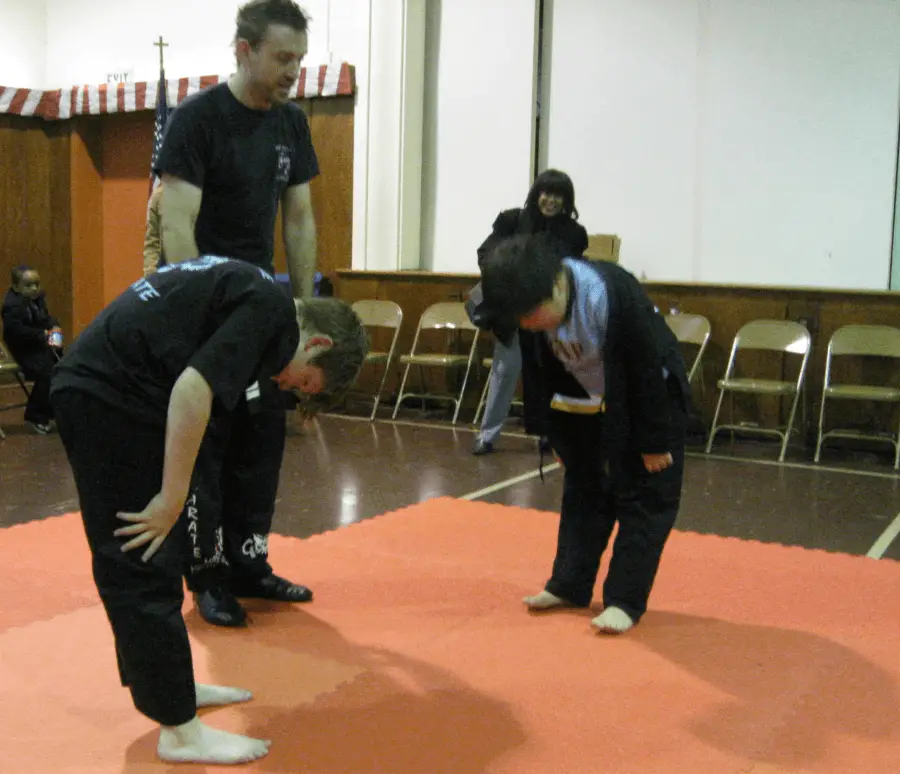
Bowing at one time was not only found in the martial arts in America. It was once an American custom that we inherited from our European ancestors. It fell out of practice and today we associate it with Asian culture or religious piety. Yet, is that what it means in the martial arts?
Bowing in the martial arts is used as a sign of respect, greeting, thanks, apology, and humility. Bowing is not only found in the martial arts and Asian cultures. Peoples throughout history have utilized the bow.
Associating a bow as strictly a custom of the martial arts and some Asian cultures limits understanding of what it can mean. Bows were utilized widely across Europe, America, Africa, and Asia throughout history.
Contents
Bowing in the Martial Arts Is No Different Than Many Other Historical Contexts
Bowing has been a sign of loyalty, honor, respect, greeting, etc. for millennia. In medieval Europe bowing was all of these and performed by royalty and peasantry alike. In a king’s presence no man’s head was allowed to be higher than his until he was seated. This form of respect necessitated a bow.
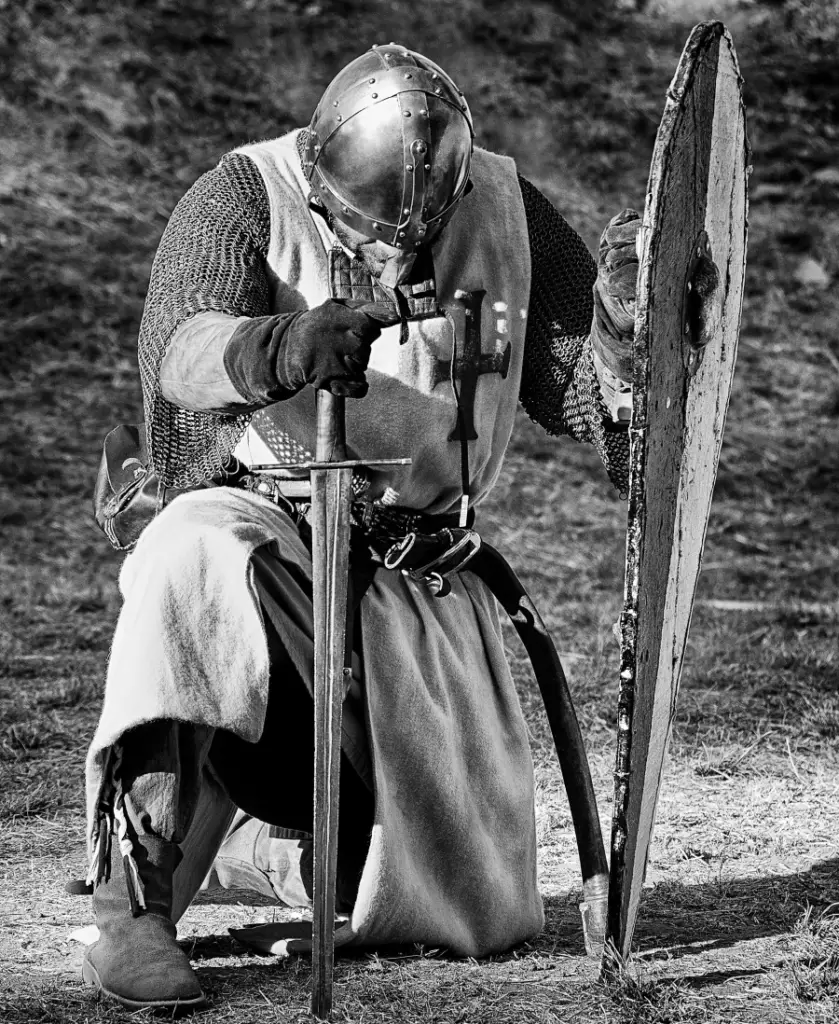
Knights would bow to Lords, Ladies, and clergy in respect. Peasants would bow to all of the above and no one considered it a religious pious act unless it was meant to be so in a Catholic Mass or procession.
In ancient Greek and Roman times bowing was a sign of respect and greeting as well as a sign of honor given to those of higher position. It was not demeaning to bow to someone, but a sign of good character and a citizen that understood the social order.
According to this NPR interview with Slate magazine’s Andy Bowers, bowing was the norm in the 1700s and early 1800s American culture. It began to fall out of favor as populist political movements became fashionable and decried the lines between those in ruling positions and the people of the country. It was relegated finally to high society and the elite by the end of the 1800s.
The loss of the practice was at least partially due to the loss of the virtue of respect for authority and one another in these cultures. The martial arts and some Asian cultures still hold honor and respect in high esteem. It is a sign when a martial artist bows that that practitioner, the instructor, and their art hold to these virtues still today.
Some styles of martial arts today, to be fair, have simply replaced the bow with hand shakes, hand slaps, and ‘fist bumps’. There is something to be said though for thousands of years of tradition. It is never a good idea to toss that kind of worldwide agreed upon value for a ‘cooler’ fad. Yet, it must be said that there is some respect in these newer forms of expression.
How Bowing Is Used in the Martial Arts?
Bows are performed before sparring matches, competition bouts, training sessions, entering or exiting an established training area, toward photos of ancestral instructors, and the list goes on. There are many instances a bow is used in the martial arts. Here we can survey a few of the main reasons.
Martial Arts Bowing as Respect
It has been stated before that the respect for opponents, the seriousness of situations and places, and instructors are a foundation on which most bowing in the martial arts stands on today. When one is going to struggle with another, there actually is a bond created that is strange and unique.
Some of the strongest bonds among people is when they have to struggle together to achieve a common goal. Oddly enough this same thing occurs when we struggle against one another as well. So the struggle is honored and even sometimes a sacrifice.
In New Zealand’s culture, the Haka can be a warning to a foe, a warriors sign of respect for those about to die along side them, or for the dead coming back from war. I learned a lot about respect when in New Zealand giving seminars to schools, military, and police personnel. Respect is one virtue that could save us in the end.
One of the most moving videos I have seen in a long while is a Haka done for returning soldiers from the Middle East conflict by the New Zealand soldiers of his company. This level of respect for one that gave the ultimate sacrifice sends chills down my spine. Respect.
Humility in the Bow
It takes a certain level of humility to admit that another person deserves your respect. This could have been earned through achievement, accumulation of wisdom, or by status given to them by your community. Whatever the reason, when someone actually deserves respect, character demands that we humble ourselves and give our ascent.
Sadly in our culture of heightened self esteem for no other reason than because we are breathing today, we have lost the desire for humbleness and any sense of its importance. Self esteem is important in its place. We need to regain the sense of deferring to those more learned or experienced.
I cringe sometimes as memories reemerge, as they often do of embarrassing moments from my teen years. I can remember having arguments with teachers or bosses thinking I knew so much. I learned later through years of hard training with world class athletes that no matter what you think you know or can do, there is always someone that knows more or can do it better.
Bowing is a sign that at least the student is on the path to understanding the value of humbleness. Humbleness could fix many social ills. It just takes us causing the ripples in our own lives to start the tidal waves in the future.
Bows in the Martial Arts are Sometimes Sentiments Like Thanks or an Apology.
Many times a bow is much more simple. It can be used as a thank you for someone assisting you with something, purposefully not landing a hard shot that you totally would have eaten, or advice given.
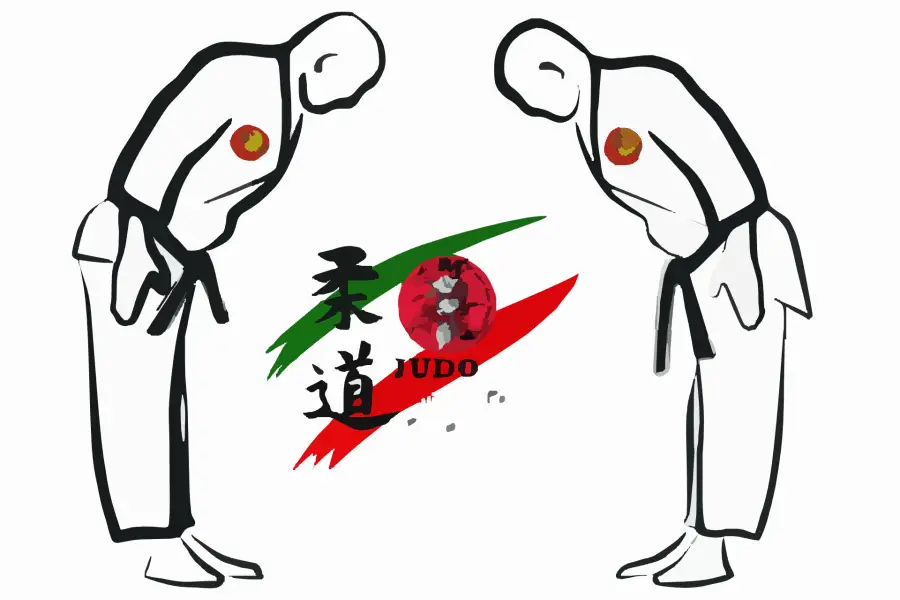
It is rare in our culture that we follow a thank you with a handshake, but if you think about it, many times people with give a slight nod. This is a remnant of the bow that used to be in our culture still holding on. Many times this slight nod says what words can not. There is no difference sometimes in a bow in martial arts.
Then there are the bows that express an apology. These can be given when illegal techniques are mistakenly used in competition, etiquette is forgotten in a class, or an accident of any other kind is committed. It shows a little more earnestness in the apology.
This can be done by another student or even an opponent in a match when it is necessary. In both of these instances it is also a sign of respect. Giving a sincere and earnest apology rarely comes without it.
Bows as Greetings
Sometimes bows are used as greetings or goodbyes between fellow students or between students and instructors. Again it all points back to respect and not thinking of yourself too highly. It becomes like a symbol between students that they are indeed on the same journey.
Greetings have taken on many forms in different cultures throughout the history of mankind. Kissing, hugging, hand shaking, and bowing are but some of the many varieties. Usually the method holds more meaning than simply hello or see you next week.
The type of hello could speak of societal status, relationship status, or the business at hand. Likewise in some Asian cultures the deepness of the bow indicates the honor given to the recipient and thus the humility displayed by the one bowing.
Whether it is through different forms or by intensity of the form, greetings can hold many hidden meanings. Bowing in this way is no different. It can be done in a short informal or deep honorific manner. It can also simply be an acknowledgement that you and the other person are both martial artists.
Are There Elements of Religious Worship in a Martial Arts Bow?
There is no doubt that in religious ceremonies the bow is done with pious and worship intentions. This has to be understood with a very specific distinction that makes a difference between these types of bows and those performed in the martial arts.
There are even these distinctions in religious types of bowing. In the Catholic faith bowing to statues or icons has no worship intent, but shows veneration or respect. In Islam, this distinction is not delineated. Many Muslims will not bow even in certain martial arts contexts for this reason.
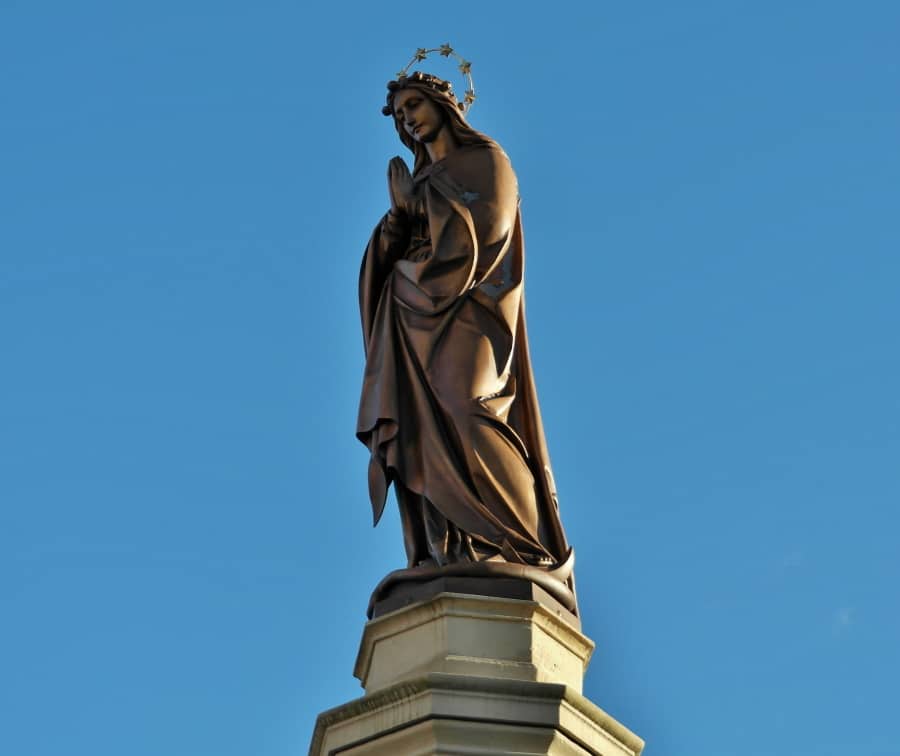
The intention and context behind any action gives it its meaning. We see the same thing in language with the different meanings of words that can change with simple sentence ordering and even slight intonations in our voice. The same thing occurs with something as multi-purposed as a bow.
Simply because someone is bowing toward a statue, photo, person, or building does not automatically mean they are intending to ascribe worth (worship) to it beyond the intentions described above. There most certainly could be this intent, but without it there is no cause for assuming it.
In the martial arts there is no integrated worship in most systems. There are some rare instances of this, but it is plainly stated and would be immediately apparent to new students. In my 30 years studying the martial arts and over 25 years teaching I have never encountered an instance where someone integrated religious elements into their training, much less accidentally participated in any.
Does Bowing to Photos of Instructors Have Religious Connotations?
This is a question that can be cleared up by a short story from a trip I took to Texas to give Kali and MMA seminars. I was gone for approximately a week and would regularly talk to my wife on the phone in the evenings. During that time I would have pictures of my wife or 4 kids with me.
Sometimes before bed I would even take out the photos and run my hand across them or even kiss them. Yeah sure, I am sappy at times. You got me.
My question is though… Isn’t that worshiping my family. I kissed a photo. That has to be worship doesn’t it? I think you get the picture (pun intended). I was no more worshiping them than Karate students bowing to pictures on a wall depicting founders of their style of martial arts.
It has to be intentional to matter. The religious connotation is not presupposed in any action, and that includes bowing in the martial arts. Bowing in and of itself is a tool of expression. The meaning of that expression originates with the one doing it, not with the tool.
Bowing to Country Flags
In some cultures nationalism is seen as a positive quality to be embraced and in others it has a negative one. Here again we have a problem of some not seeing the nuances of the situation. Appreciating the value of your own culture and homeland is a good quality. This also goes for honoring the same in the lands of others.
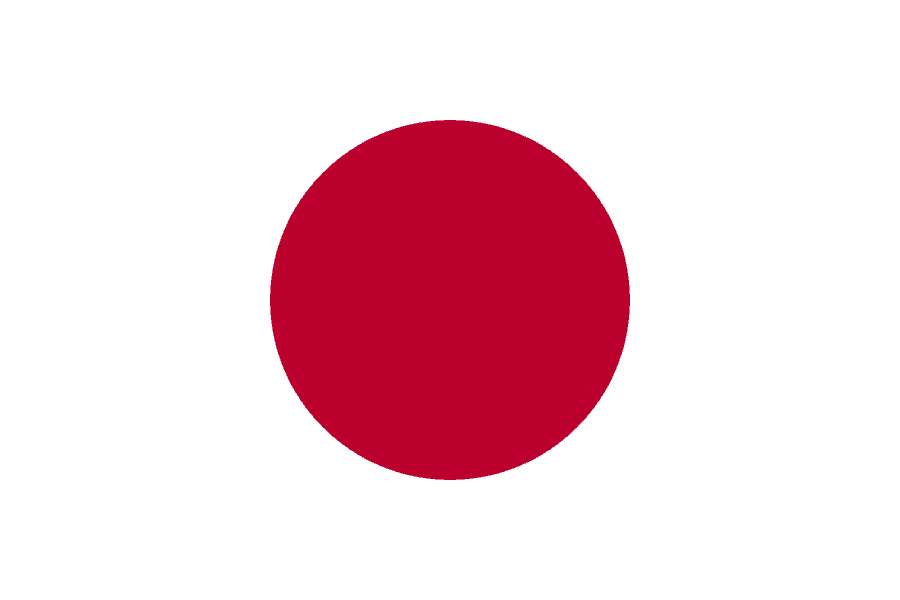
This is what bowing to flags of other nations shows. It is a humbleness in acknowledging the qualities of other cultures and showing appreciation for what you are being given from that group of people. This is in no way casting a vote for the superiority of any nation over another. We are naturally going to value our own home and culture, but to honor another’s shows good character.
One can be appreciative of what others have accomplished without degrading their own. In the same way, we can be appreciative of the cultures that brought us techniques and traditions we learn from in the martial arts without disparaging our own. It is possible since we are not flat characters in a sitcom or a children’s book. Humans have the capability of being much smarter than we sometimes want to give credit for.
So, bowing to the flags of countries where the art you are studying originated is not in any way disrespectful to your own. On the contrary, it shows that your country still produces people with the confidence to give credit to others without feeling that it somehow makes you less.
Kneeling While Bowing
Kneeling is another sign to some that whatever is being done has to have a religious aspect to it. Like with the other concerns, this is not the case. Kneeling in Asian cultures is a sign of humbleness and more importantly a posture of listening and learning. In the west sitting is this symbol.
It does not mean because someone is on their knees that automatically religious actions have to follow. For instance, most grappling arts spend a majority of their time sitting, lying down, or on their knees. So it stands to reason that they have bowing postures on their knees as well.
In traditional martial arts styles, kneeling is a sign of higher respect for the person, event, or location. Though some Asian cultures use kneeling as a posture for worship, like most all other cultures, it should not be permanently attached to the posture. These traditional martial artists are not in any way worshiping when they are using this position to show respect.
What makes something religious or not is not a posture, but an intention for it to be religious. It is a highly rare instance if you find yourself witnessing a true religious display in the martial arts. Honoring ancestors is just that, showing honor not worship. Giving respect is not the same as pious reverence.
The Takeaway From Martial Arts Bowing…
Bowing has been around as long as humans have had a waist. Bending down in many different ways can show respect to those with authority or giving place to those you choose to honor. Nearly all cultures and lands have had some form of it in their past. The martial arts simply keep the tradition alive.
In the martial arts, honor and respect are at the root of most of the instances of bowing you will see. Other motives, like apologies and greetings can be included, but the foundational reason will ultimately come back to respect. This respect is not only traditional, but needed in a sport and art that has so many possibilities for misunderstandings, mistakes, and injuries.
The religious undertones of bowing that may seem off putting to some, should not cause such uneasiness. The practical intent of the bow in the martial arts is not for religious purposes. It is possible in some outlier instances that someone may have such an intent. It is just not a real part of the martial arts as a whole. This can be said for many things in life. The rule is not defined by the exceptions. The rule is the norm.
